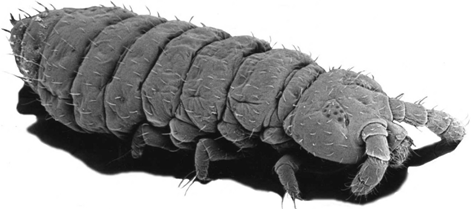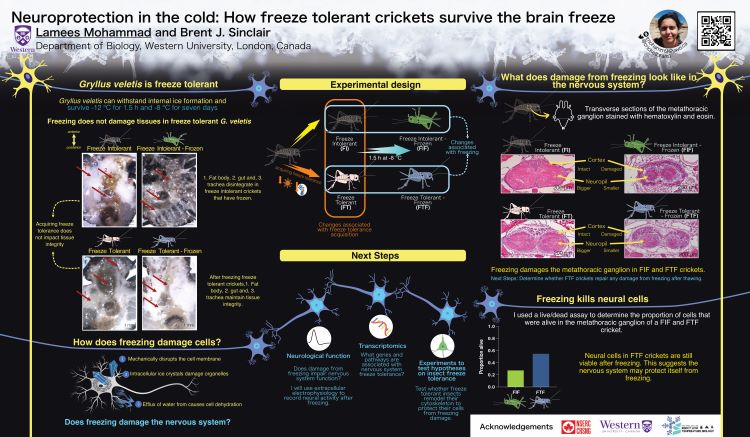
The Sinclair Lab at UWO

 |
Insect Low
Temperature Biology The Sinclair Lab at UWO |
 |
| Lamees Mohammad |
|||
| Home People Research Publications Vacancies Links Contact Us Biology Home |
Hi all! Iím a second-year Ph.D. student in the biology graduate program. I started in the Sinclair lab as an intern and honours thesis student on Ďteam beetle. After I finished undergraduate studies, I became interested in neuroscience and understanding how the brain works so I went on an adventure to the University of Calgary and received my MSc. For my Ph.D. project, I want to know how the nervous system of freeze-tolerant insects withstands freezing. Freezing causes neuronal dysfunction and tissue damage which will ultimately kill insects.
The cool thing about freeze-tolerant insects is after they freeze and thaw, the insects regain mobility suggesting neurological function is restored. I think these insects either protect their nervous systems from freezing or repair any damage after thawing.
Like everyone else in the lab, I am using Gryllus veletis to study the neurobiology of insect freeze tolerance. If you want to learn more about frozen cricket brains donít hesitate to send an email, or DM me on Twitter (@cricketbrain1).
Here's the poster
I presented at the 2022 APS intersociety meeting in San Diego (click
here for a larger version)

|
 |
|